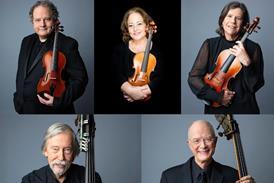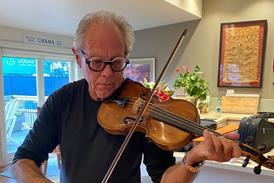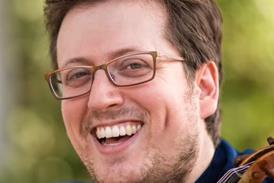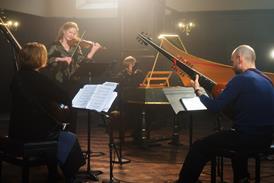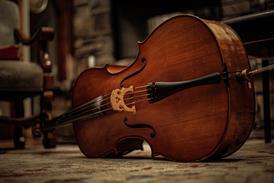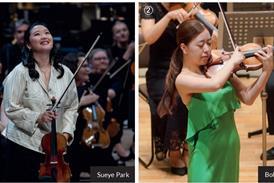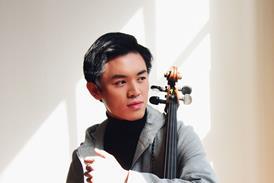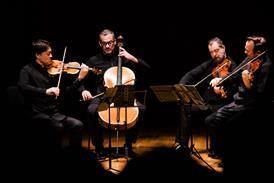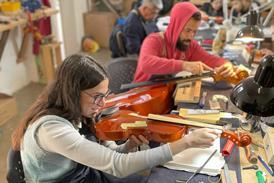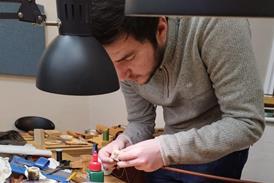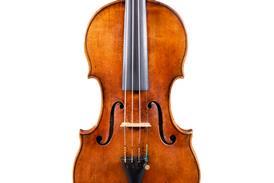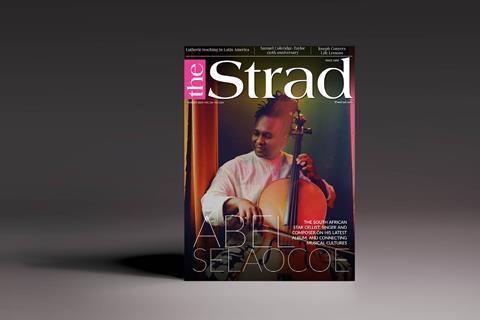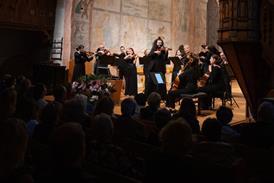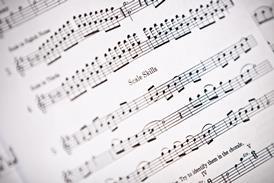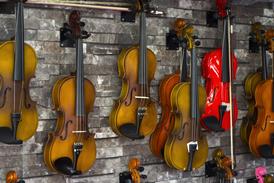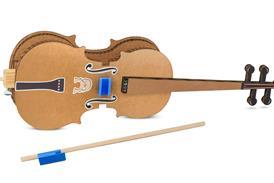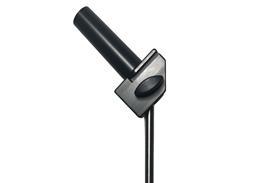Technical – Page 9
-
 Premium ❘ Feature
Premium ❘ FeatureRecipe for success: Stradivari’s varnish
The search for Stradivari’s varnish formula has continued since the 18th century, but there have been few scientific analyses of the varnish itself. Stewart Pollens reveals the results of his recent study of the varnish on five of Stradivari’s instruments, in this feature from May 2009
-
 Premium ❘ Feature
Premium ❘ FeatureStradivari’s varnish: a chemical analysis
Jean-PhilIppe Echard and Balthazar Soulier reveal the results of their seven-year research into Stradivari’s varnish, using five of the master’s instruments from Paris’s Musée de la Musique. From April 2010
-
 Premium ❘ Feature
Premium ❘ FeatureHistorical varnishes: Beneath the surface
The inclusion of minerals in Italian varnishes from the 16th to mid-18th centuries has long been a source of speculation. Balthazar Soulier, Stefan Zumbühl and Christophe Zindel present the first results of a long-term study showing that key answers can be found in early German recipes
-
 Premium ❘ Feature
Premium ❘ FeatureTrade Secrets: Decorating a copy of a historical violin
Gold and silver leaf, glass powder and ink are all necessary in this detailed and complex process
-
 Premium ❘ Feature
Premium ❘ FeatureMy Space: Yuji Kaneko
The luthier returned to Japan from Italy two years ago to establish a workshop in his home town
-
 Premium ❘ Feature
Premium ❘ FeatureMaking Matters: In the light of experience
Most violin makers will have a UV cabinet in their workshop, but how many realise the differences between the light sources? In the first of two articles, Andreas Hampel and Andreas Hudelmayer examine several of the available options
-
 Premium ❘ Feature
Premium ❘ FeatureProject Lutherie: Euclidean geometry and digital instrument design
A decade ago, François Denis’s Traité de Lutherie showed how the old Italians used Euclidean geometry to design their instruments. Now a computer program based on these principles allows luthiers to construct and adapt patterns quickly and easily. Its creator, Harry Mairson, explains the genesis of Digital Amati, in this ...
-
 Premium ❘ Feature
Premium ❘ FeatureImaging technology: Learning the finer points
Researchers have used particle-accelerator technology to unlock a Guadagnini’s tiniest secrets. Trieste-based imaging specialist Franco Zanini explains how, in this lutherie feature from January 2012
-
 Premium ❘ Feature
Premium ❘ FeatureAntiquing: The art of deception?
Making a new instrument look old is a painstaking craft that requires skill, patience and imagination. But why do luthiers spend their time creating an unreal effect? Peter Somerford speaks to both advocates and critics of the process
-
 Premium ❘ Feature
Premium ❘ FeatureViolin making and AI: Intelligent design
The science of violin acoustics has encompassed 3D scanning, CNC technology and good old-fashioned tap tones – so why not AI software? Sebastian Gonzalez presents the results of a project that could help predict an instrument’s tone qualities even before it’s made
-
 Premium ❘ Feature
Premium ❘ FeatureTrade Secrets: Varnish crackle effects
An easy approach to varnish crackle and faux crackle techniques that could be applied to restoration and antiquing
-
 Premium ❘ Focus
Premium ❘ FocusThe geometry of violin outlines: Proportional representation
In this article from March 1990, Leslie Wyatt offers a rational and coherent geometrical method for the construction of an inner form outline and for sizing and positioning the f-holes, to break free from the traditional slavish reproduction of classical instruments
-
 Premium ❘ Feature
Premium ❘ FeatureClimate conundrum: Does wood from the ‘Little Ice Age’ account for the brilliance of Stradivari’s violins?
Did Stradivari have superior wood because of exceptionally low temperatures during his lifetime? In this article from April 2014, John Waddle, Steve Rossow and Steve Sirr investigate the idea using CT scans of Cremonese instruments
-
 Focus
FocusGood vibrations: How violin modes influence tone quality
In the August 2021 issue, Joseph Curtin examines the evolution of neck setting. In part two of his article about violin modal analysis from 2009, he discusses low-frequency resonances that influence a violin’s acoustic behaviour
-
 Premium ❘ Feature
Premium ❘ FeatureViolin modal analysis – part one: Scent of a violin
In the first of a two-part article from June 2009, Joseph Curtin investigates one of the low-frequency resonances that help define a violin’s acoustic ‘perfume’, and explains how studying it can benefit makers
-
 Premium ❘ Feature
Premium ❘ FeatureViolin modal analysis – part two: Good vibrations
In the second of a two-part article from July 2009, Joseph Curtin continues his investigation of the low-frequency resonances that influence a violin’s acoustic behaviour
-
 Premium ❘ Article
Premium ❘ ArticleSoundpost: Letters to the Editor August 2021
A selection of letters The Strad receives each month from its readers around the world: August 2021 issue
-
 Premium ❘ News
Premium ❘ NewsAnalysis August 2021: Adaptive learning
During the pandemic, some luthiers have begun making online courses to record their techniques and share their knowledge. Is it a viable alternative to one-to-one teaching? By Peter Somerford
-
 Premium ❘ Feature
Premium ❘ FeatureMy Space: Gertrud Reuter
The luthier’s workshop, based in Basel, Switzerland, contains furniture from the Paris firms of Caressa & Français, Maucotel & Deschamps, and Daniel Moinel
-
 Premium ❘ Feature
Premium ❘ FeatureMaking Matters: Something in the air
Steve Sirr and John R. Waddle use CT scans to examine the internal air volume of 20 Cremonese violins, and make a surprising discovery about the soundpost position


